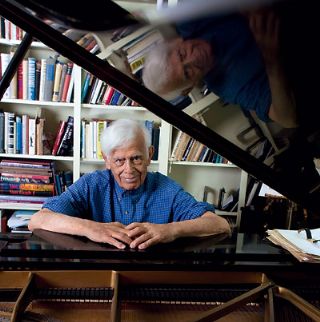|
Chamber
FAMILIAR AND NEW - TRIO NAVARRO'S SPRING CONCERT IN WEILL
by Terry McNeill
Sunday, April 21, 2024
Symphony
MONUMENTAL MAHLER 5TH IN SO CO PHIL'S SEASON ENDING CONCERT
by Terry McNeill
Sunday, April 14, 2024
Chamber
OAKMONT SEASON CLOSES WITH STRAUSS' PASSIONATE SONATA
by Terry McNeill
Thursday, April 11, 2024
Chamber
MORE GOLD THAN KORN AT ALEXANDER SQ CONCERT
by Terry McNeill
Sunday, April 7, 2024
Choral and Vocal
VIBRANT GOOD FRIDAY REQUIEM AT CHURCH OF THE ROSES
by Pamela Hicks Gailey
Friday, March 29, 2024
TWO OLD, TWO NEW AT THE SR SYMPHONY'S MARCH CONCERT IN WEILL
by Peter Lert
Saturday, March 23, 2024
Chamber
NOT A SEVENTH BUT A FIRST AT SPRING LAKE VILLAGE CONCERT
by Terry McNeill
Wednesday, March 20, 2024
THIRTY-THREE PLUS VARIATIONS AND AN OCEAN VIEW
by Terry McNeill
Saturday, March 16, 2024
Choral and Vocal
A ST. JOHN PASSION FOR THE AGES
by Abby Wasserman
Friday, March 8, 2024
Choral and Vocal
SPLENDID SCHUBERT SONGS IN SANET ALLEN RECITAL
by Terry McNeill
Saturday, March 2, 2024
|
 |
 Pianist Frank Glazer |
PIANISTIC PANACHE AT A RIPE OLD AGE
by Kenn Gartner
Thursday, July 1, 2010
At last, an old fashioned pianist!
Eighty persons attended Frank Glazerís recital July 1 which, to this perpetual piano student, was worth twenty piano lessons. Asked why he does not retire, Mr. Glazer pointed out he is beginning to like the sound he creates on his instrument, and he is now 95.
About the only negative part of the long concert was the less than sterling the quality of the house piano at Mill Valleyís United Methodist Church. The lower and middle register needed substantial voicing while the upper register remained gorgeous. But more on this later.
Mr. Glazer began with Bachís Toccata in E minor. It was performed without undue drama, and starts with a written out improvisation as an introduction. A double subject fughetta is its second movement. The third section is also a written out improvisation including tremolos and various arpeggios wandering around the harmonic landscape. Finally, a three-voice fugue concludes this work. While there were a few missed notes, what was interesting is the longer Mr. Glazer played the more fluid and fluent he became, his sound more varied and colored.
The remainder of the first half was devoted to the four-movement Schubert Sonata in G major, Opus 78, D. 894. This is a symphony for piano and requires the utmost musicality as well as audience patience and intense listening skills. In the first movement, the Molto moderato e cantabile the right hand filigrees were exceptionally clear. It showed the quality of the instrument, and had it been properly voiced and regulated, as well as tuned, this concert would have bordered on the incredible. The treble carried well and was clear and brilliant when needed, but as the music descended into the middle and lower registers, Mr. Glazer needed to work harder to bring out these parts. The double notes in the fourth movement Allegretto were handled with great facility.
Following intermission, Mr. Glazer presented both of Chopinís Op. 27 Nocturnes and the Polonaise in F-sharp minor, Opus 44. I felt more could have been made of these two immortal Nocturnes. For example, the C sharp Nocturne demonstrates the rare use of counterpoint by Chopin, but, in the F-sharp Polonaise, Mr. Glazer let fly with virtuosity and panache. You had to be there! It was extremely moving!
Schumannís ďEtudes En Forme de Variations,Ē Opus 13 (XII Etudes Symphoniques) provided the audience with the vision of Mr. Glazerís fingers moving like well oiled pistons, but never with the harsh sound so common in many of todayís recitals. In fact, the preceding Polonaise provided the warm up for this virtuoso work. It is interesting to note these etudes were written about two years after the crippling of Schumannís right fourth finger. All we know of Schumannís piano style is what he wrote following this tragic incident in 1832.
The pianist, now a Maine resident, did not play any encores but was swamped by ardent admirerS following the program.
|

